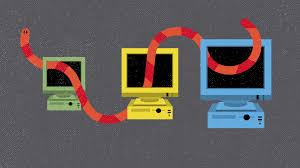
The Internet's First Major Cyber Attack
The Morris Worm
Shane Brown
2/8/20253 min read


The Morris Worm: The Internet's First Major Cyber Attack
A Digital Apocalypse in the Making
It started like any other day in 1988. The internet—still in its infancy—was a realm of academics, researchers, and government institutions. A digital utopia, untainted by cyber threats. Or so they thought. That all changed on November 2, 1988, when an unsuspecting Cornell University graduate student named Robert Tappan Morris unleashed what would become one of the first and most legendary cybersecurity attacks in history: The Morris Worm.
Little did he know, his experiment would spiral out of control, crippling thousands of computers, paralyzing major institutions, and forever changing the way we think about cybersecurity.
The Birth of the Worm
Robert Tappan Morris wasn’t a cybercriminal. In fact, he was a brilliant computer science student, the son of a chief scientist at the National Security Agency (NSA). His curiosity led him to develop a self-replicating program—or "worm"—to measure the size of the internet. The goal? Simple: release it, let it spread, and analyze the results.
But Morris made a fatal miscalculation.
To prevent systems from ignoring his worm, he included a mechanism that allowed it to reinfect computers multiple times. However, the logic was flawed—computers got infected repeatedly, consuming resources until they slowed to a crawl or crashed completely.
The Unstoppable Chaos
Within hours, the Morris Worm had spread like wildfire across 6,000 computers, affecting about 10% of the internet (which, at the time, only consisted of about 60,000 machines). Universities, military sites, and research institutions found their systems grinding to a halt. MIT, Harvard, NASA, and even the Pentagon were among the victims.
Back in 1988, cybersecurity wasn’t a widespread concern. Firewalls were almost nonexistent, and the concept of malware was barely understood. The worm exposed just how vulnerable the internet was—even in its earliest days.
The Aftermath: The Internet’s First Cybersecurity Wake-Up Call
The damage was done. Panic spread through the tech community. System administrators scrambled to contain the infection, but it was too late. It took days to clean up the mess, and the cost was estimated at between $100,000 and $10 million.
Morris, realizing his mistake, turned himself in. In 1990, he became the first person convicted under the Computer Fraud and Abuse Act (CFAA). His sentence? Three years of probation, 400 hours of community service, and a $10,050 fine. While he avoided prison time, his worm’s legacy would live on as the internet’s first major cybersecurity incident.
Ironically, Morris later became a respected computer scientist and is now a professor at MIT. His accidental creation paved the way for modern cybersecurity defenses, forcing institutions to rethink security measures, establish intrusion detection systems, and develop better safeguards against malware.
Lessons from the Morris Worm
Even "harmless" experiments can go terribly wrong. Morris didn’t intend to cause damage, but his oversight led to one of the first internet-wide security crises.
The internet is never as secure as we think. Even in the early days, vulnerabilities existed, and today, cyber threats are far more sophisticated.
Cybersecurity laws were born from necessity. Without the Morris Worm, laws like the CFAA might not have been established as early as they were.
Self-replicating malware is dangerous. The Morris Worm set a precedent for future threats like ILOVEYOU, Stuxnet, and WannaCry, proving how fast malicious software can spread if unchecked.
Final Thoughts: A Digital Legend Lives On
Today, worms and viruses are commonplace, but in 1988, the Morris Worm was a shocking revelation. It marked a turning point in cybersecurity, reminding us that even the most innocent of intentions can have catastrophic consequences.
So, next time you hear about a new malware attack wreaking havoc, remember: it all started with one curious student, a simple worm, and the biggest unintended cybersecurity disaster of its time.
References:
Hafner, Katie; Markoff, John. Cyberpunk: Outlaws and Hackers on the Computer Frontier. Simon & Schuster, 1991.
Spafford, Eugene H. "The Internet Worm: Crisis and Aftermath." Communications of the ACM, June 1989.
Levy, Steven. Hackers: Heroes of the Computer Revolution. Penguin Books, 2010.
United States v. Robert Tappan Morris, 928 F.2d 504 (2d Cir. 1991).
Innovate
Building websites and securing your digital presence.
Connect
Support
Info@sinistergatedesigns.com
© Sinister Gate Designs, LLC 2025. All rights reserved.
